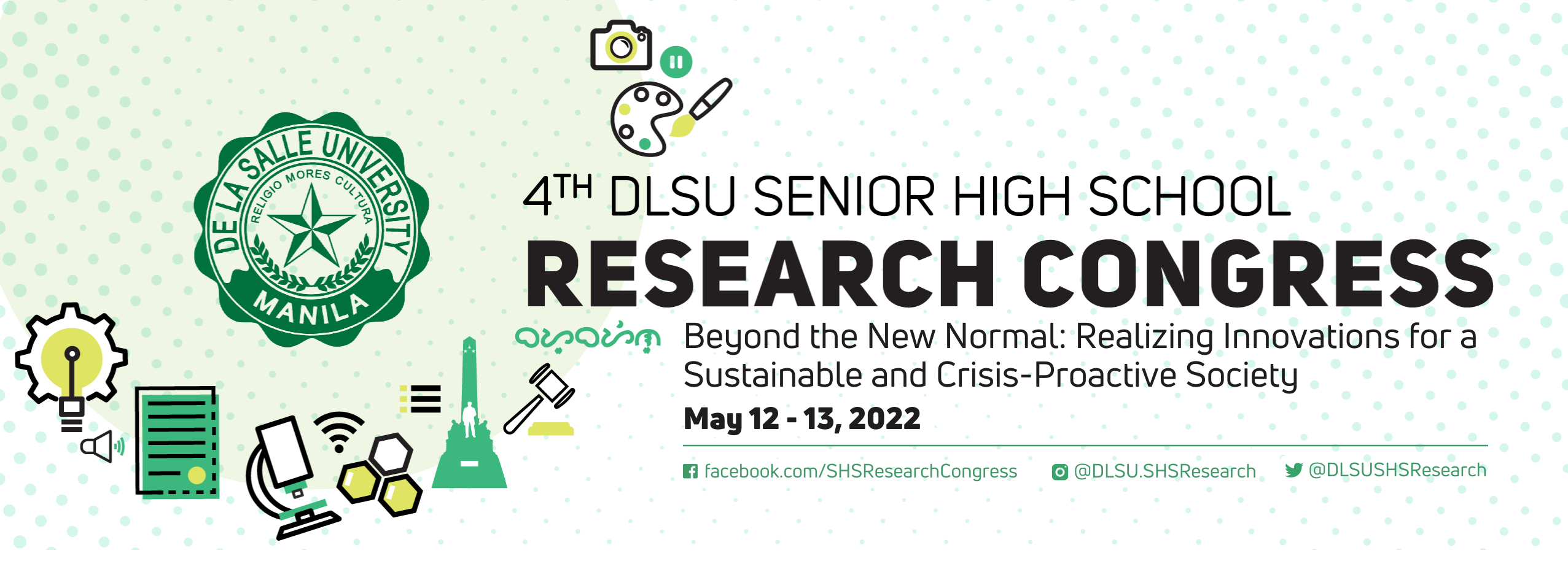Document Types
Business Presentation
Research Advisor (Last Name, First Name, Middle Initial)
Marinela B. Cabusao
Start Date
12-5-2022 1:00 PM
End Date
12-5-2022 3:00 PM
Abstract/Executive Summary
As fast fashion causes the persistence of overconsumption and improper garment disposal, the planet suffers from the industry's serious impact (Le, 2020). The fashion sector emits 1.2 billion tons of carbon dioxide per year, revealed in 2021 as the third greatest polluter (Climate Council, 2021). To combat these environmental issues, some fashion brands have adopted a progressive concept of fast fashion. The study then intends to examine the association between the following variables based on Icek Ajzen's Theory of Planned Behavior: Perception regarding Fashion Sustainability (PERFS), Fashion Brands’ Sustainable Efforts (SUSEFF), Awareness Regarding Fashion Sustainability (AWAFS), Intention (INTN), and DLSU-IS SHS Students’ Consumer Behavior (CONSBEH). The study garnered data from 341 DLSU-IS SHS Students with an online questionnaire. Moreover, the data were analyzed using multiple regression, correlation, and path analysis, following their frameworks. It was found that CONSBEH is significantly impacted by INTN and indirectly affected by AWAFS. Additionally, PERFS and SUSEFF have a weak inverse relationship with INTN, whereas AWAFS was found to have a moderate positive relationship with INTN. Overall, the study surfaced with five major findings regarding the relationship between the variables presented in the conceptual framework. However, most of the variables’ relationships have yet to be determined as a defining characteristic for fueling Consumer Behavior and must be explored with further research.
Keywords
DLSU-IS students; fast fashion; consumer behavior; sustainable fashion; brand efforts
Research Theme (for Paper Presentation and Poster Presentation submissions only)
Business Research
Included in
A Study on the Brands’ Sustainable Fashion Efforts on DLSU-M SHS Students’ Consumer Behavior
As fast fashion causes the persistence of overconsumption and improper garment disposal, the planet suffers from the industry's serious impact (Le, 2020). The fashion sector emits 1.2 billion tons of carbon dioxide per year, revealed in 2021 as the third greatest polluter (Climate Council, 2021). To combat these environmental issues, some fashion brands have adopted a progressive concept of fast fashion. The study then intends to examine the association between the following variables based on Icek Ajzen's Theory of Planned Behavior: Perception regarding Fashion Sustainability (PERFS), Fashion Brands’ Sustainable Efforts (SUSEFF), Awareness Regarding Fashion Sustainability (AWAFS), Intention (INTN), and DLSU-IS SHS Students’ Consumer Behavior (CONSBEH). The study garnered data from 341 DLSU-IS SHS Students with an online questionnaire. Moreover, the data were analyzed using multiple regression, correlation, and path analysis, following their frameworks. It was found that CONSBEH is significantly impacted by INTN and indirectly affected by AWAFS. Additionally, PERFS and SUSEFF have a weak inverse relationship with INTN, whereas AWAFS was found to have a moderate positive relationship with INTN. Overall, the study surfaced with five major findings regarding the relationship between the variables presented in the conceptual framework. However, most of the variables’ relationships have yet to be determined as a defining characteristic for fueling Consumer Behavior and must be explored with further research.


